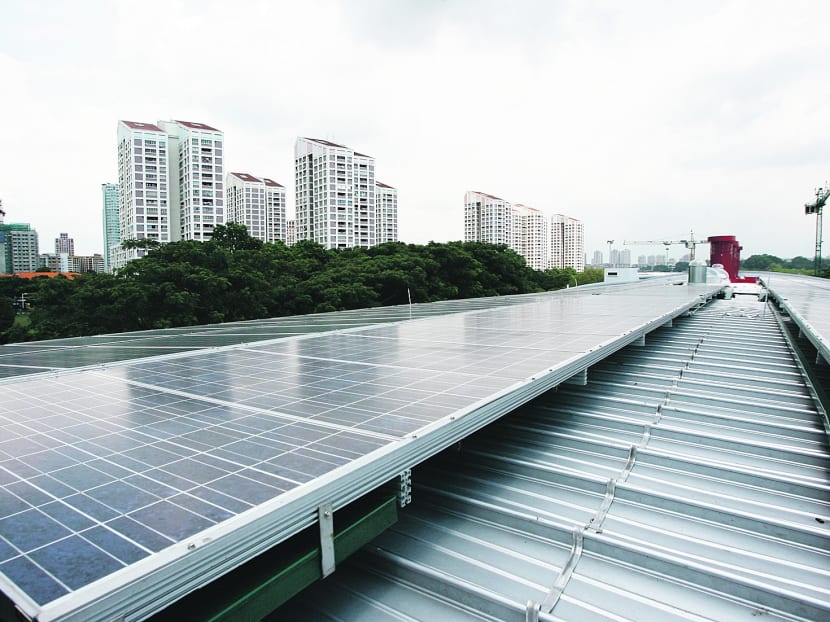Authorities looking into deploying renewable energy on larger scale
SINGAPORE — In future, it could be easier for smaller consumers with intermittent energy sources — such as schools, factories and warehouses — to be paid for supplying excess electricity that they generate to the national grid.

As renewable energy grows as a commercially-viable energy source for Singapore, the review will help to prepare for integrating such renewable energy options into the electricity market eventually without affecting grid stability. Photo: Ernest Chua
SINGAPORE — In future, it could be easier for smaller consumers with intermittent energy sources — such as schools, factories and warehouses — to be paid for supplying excess electricity that they generate to the national grid.
How this will be done is being worked out in a review of the regulatory framework that the Energy Market Authority (EMA) is now conducting, said Second Minister for Trade and Industry S Iswaran, at the start of the Singapore International Energy Week yesterday. A public consultation on the framework was also launched yesterday.
Intermittent generation sources are those whose output depends on environmental factors and weather conditions. Examples include solar and wind energy.
As renewable energy grows as a commercially-viable energy source for Singapore, the review will help to prepare for integrating such renewable energy options into the electricity market eventually without affecting grid stability, said Mr Iswaran.
One of the first changes to ease the entry of intermittent energy producers into the market is the raising of the supply cap to the grid. Instead of the current “hard cap” of 350MWp, producers will be able to supply 600MWp to the grid, said Mr Iswaran, who is also Minister in the Prime Minister’s Office and Second Minister for Home Affairs.
“That’s a significant move, because when you incorporate renewables with their intermittency and so on, the need for back-up and reserve capacity is even greater ... The main signal we are sending here is that the system has the capacity to accommodate renewable energy introduction,” he said.
The EMA will continue to explore “how best to procure and cost in reserves to manage this intermittency”, he added.
On another front, a Demand Response scheme will also be rolled out in 2015, following a consultation process that was launched last year, said Mr Iswaran.
The scheme, which allows larger consumers — those that consume over 10,000KwH of electricity every month, such as commercial and industrial users — to monitor prices of energy and adjust their usage accordingly, aims to encourage them to optimise their energy use. Those who stand to benefit, for instance, are those with flexible production processes and can choose to temporarily switch off specific non-critical production equipment, or consumers who can reduce their electricity demand by running their back-up generators for short periods,
“This can moderate price spikes, lower energy costs and generate system-wide savings. These savings will then be passed through to consumers who curtail their demand,” said the minister. According to the EMA, these consumers make up about 75 per cent of electricity demand here.
Demand Response providers will also benefit from the scheme — they will receive incentive payments amounting to one-third of savings when electricity prices fall because of lower demand.
Mr Iswaran encouraged these providers to approach their customers and equip them with the technical requirements to participate in the scheme in the interim.
More details of the scheme will be released at the SIEW this week.






